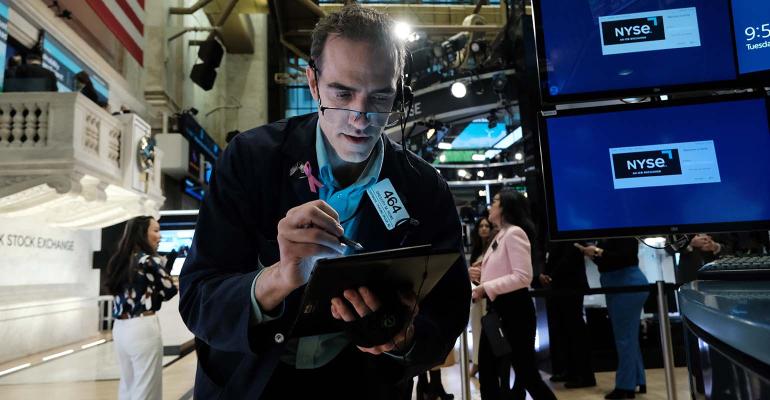The objective of asset allocation funds is to provide better-than-benchmark returns with (possibly) lower volatility through superior stock selection and/or successful market timing. The question for investors is: Are these funds likely to add value?
To answer that question, D.K. Malhotra and Elroi Hadad, authors of the study “Can Allocation Strategies Create Superior Alpha?” published in the June 2024 issue of The Journal of Investing, evaluated the risk-adjusted performance of four types of U.S. mutual funds that utilize asset allocation strategies—aggressive (typically 70%-90% equity allocation), moderate (50%-70% equity allocation), flexible (20%-80% equity allocation) and cautious (20%-50% equity allocation). They employed a range of asset pricing models, including the Fama-French three-factor model (beta, size and value), the Carhart four-factor model (adding momentum) and the Fama-French five-factor model (beta, size, value, investment and profitability). They also compared the performance of the allocation mutual funds against both the U.S. equity market, represented by the Russell 3000 index, and global equity markets, represented by the FTSE All World Index. Using Morningstar’s mutual fund database, they analyzed the performance of an equal-weighted portfolio covering the period 2011-2021. Here is a summary of their key findings.
None of the allocation strategies outperformed the benchmark U.S. equity market index, either on a raw return basis or in terms of the Sharpe ratio (a measure of risk-adjusted performance). While each of the allocation strategies earned higher returns than the FTSE All World Index, none produced a higher Sharpe ratio than the benchmark (and three of the four underperformed).
None of the allocation strategies produced statistically significant alphas as measured against the three-factor model, while the flexible and aggressive funds produced statistically significant (at the 5% confidence level) negative monthly alphas of -18bps and -16bps, respectively. Results were virtually the same when measured against both the four- and five-factor models. The negative alphas suggest weak stock-picking skills.
There was no evidence of successful market timing—mutual fund managers were unable to accurately predict future market movements to generate excess returns.
“Because average monthly returns of these funds had a significantly high correlation with U.S. and international stocks during the sample period (and that correlation increased significantly and reached nearly perfect positive [0.98] levels during COVID-19 lockdowns), the diversification benefits touted as a reason to invest in allocation mutual funds over standard mutual funds may not be realized.”
Investor Takeaways
Malhotra and Hadad’s findings are consistent with prior research demonstrating that active management, be it through stock selection, market timing or asset allocation strategies, is a loser’s game. While it’s possible to win a loser’s game (which is what keeps hope alive), the odds of doing so are so poor that it is imprudent to try. No one has devised a way to identify, in advance, a way to identify the small percentage of active managers who will outperform in the future. Many have tried, and even claimed success. However, out-of-sample studies have found that not to be the case. For example, Martijn Cremers and Antti Petajisto, authors of the 2009 study “How Active Is Your Fund Manager: A New Measure That Predicts Performance,” published in The Review of Financial Studies, concluded: “Active Share predicts fund performance: funds with the highest Active Share significantly outperform their benchmarks, both before and after expenses, and they exhibit strong performance persistence.” Their finding provided hope.
Unfortunately, subsequent research has found problems with the conclusions drawn by Cremers and Petajisto. Using the same database they employed, Andrea Frazzini, Jacques Friedman and Lukasz Pomorski examined the evidence and the theoretical arguments for active share as a predictor of performance and presented their findings and conclusions in the paper “Deactivating Active Share,” published in the March/April 2016 issue of the Financial Analysts Journal. The authors concluded that, controlling for benchmarks, active share has no predictive power for fund returns.
Providing even more damning evidence, Ananth Madhavan, Aleksander Sobczyk and Andrew Ang, authors of the 2016 study, “Estimating Time-Varying Factor Exposures,” actually found that the measure of active share proposed by Cremers and Petajisto was negatively correlated (-0.75) to fund returns after controlling for factor loadings and other fund characteristics. Thus, they concluded that “it is not the case that high conviction managers outperform.”
And in their 2021 study “Unattractive Share” Morningstar empirically demonstrated that since 2011 investors in high-active-share funds in all Morningstar categories have paid higher fees, incurred greater risks and earned lower returns.
Thus, the takeaway is to avoid active strategies that engage in individual security selection and/or market timing.
Larry Swedroe is the author or co-author of 18 books on investing, including his latest, Enrich Your Future: The Keys to Successful Investing





